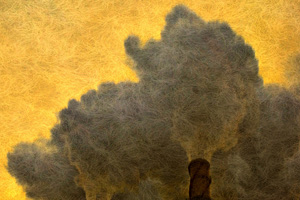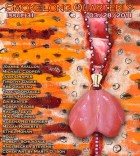What was your inspiration for “Moons?”
Family friends had recently returned from a ski trip in Lake Tahoe. The seven-year-old son told how he’d accidentally hit his father in the face with a snowball. While there was laughter after the story’s telling, I also sensed an undertow. The incident stayed with me and resulted in “Moons.” I love that stories can be sparked from such simple moments. More often than not, it’s the tiny moments that most capture my imagination.
You’ve managed to give the reader a glimpse at a whole life in only 270 words. Can you talk a little about micro-fiction and why it appeals to you?
Very short fiction is the art of precise selection. The form should exact and reward. It’s writing with care, compression and meaning. It’s immediate and powerful. It’s as much about what’s omitted as what’s included, if not more so. Done right, very short fiction renders just the right moments to best reveal the true heart(s) of the story and its character(s). The best very short stories are like seeing our reflections in a drop of rain.
I love the way you use pattern in this story, employing key words to transition from one sentence to the next: left eye higher than the right—an example of asymmetry—and then the word “asymmetrical” in the next used in conjunction with “breasts.” Breasts become snowballs and snowballs become weapons only three sentences into the story. This mimics how most of us think and it pulls readers into “Moons.” I’m curious about your process. Is this patterning deliberate or does it just happen when you’re in the “zone.”
It seems “Moons” and its cast of characters are smarter than me. The pattern and momentum here were organic. The sentences built on each other and, draft after draft, I got out of the story’s way and let it happen.
I’ve read that you’re originally from Ireland. Can you talk a little about how being from a country with a grand literary legacy has influenced your writing? Or has it?
Every country and culture has its greats, but, yes, I’m fiercely proud of my Irish culture, heritage and literary legacy. I’m also grateful. Irish writers and stories were my first loves, and they continue to influence and inspire me to this day. I don’t actively think about that staggering genius and legacy, though, when I write. The pressure would cripple me.
You have one story collection out, Cut Through the Bone, and another forthcoming in Spring, 2011, Hard to Say. Can you talk a little about what’s in them and how they came about?
Cut Through the Bone was released from Dark Sky Books, December 1st, 2010. It’s a collection of thirty very short stories and centers on loss and missing parts, both literal and figurative. Brian Carr accepted my story “Shatter” for Dark Sky Magazine. His generous praise and enthusiasm for that story encouraged me to query his and Kevin Murphy’s interest in my story collection. Hey, presto.
Hard to Say, forthcoming from PANK in May, 2011 (and currently available for pre-order) is the third title in their excellent Little Books series and was selected through their annual contest. It is a collection of fifteen linked very short stories and centers on a family in chaos, and the broken and the brutal.
Any closing thoughts you’d like to share?
Thank you, Gay, for these excellent questions, and to you, Tara, and the whole team for SmokeLong. I’m excited and honored to contribute. Thank you also to Coop Renner for providing the excellent artwork to accompany “Moons.”



 The SmokeLong Grand Micro Contest (The Mikey) is now an annual competition celebrating and compensating the best micro fiction and nonfiction online.
The SmokeLong Grand Micro Contest (The Mikey) is now an annual competition celebrating and compensating the best micro fiction and nonfiction online.